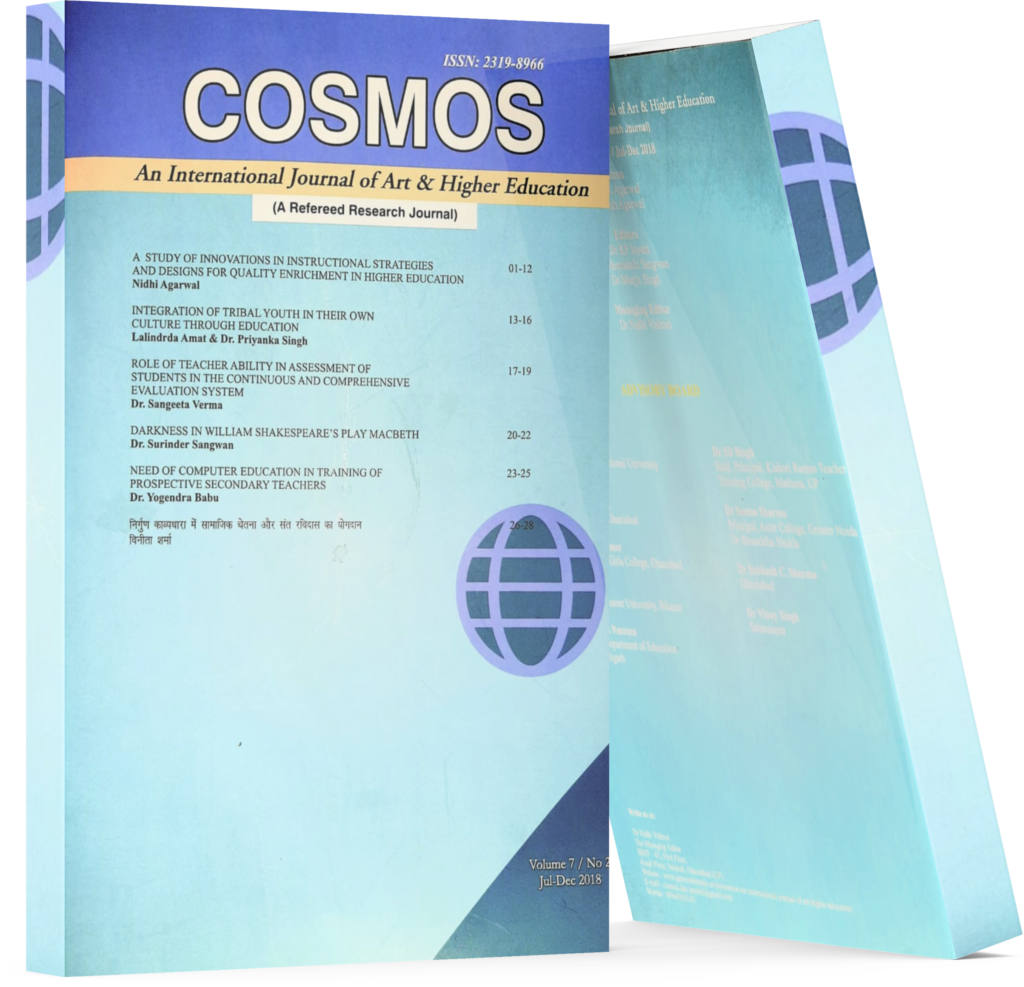Secondary School Teachers’ Beliefs Towards Blended Learning With Respect To Their Habitat
Keywords:
Blended Learning, Secondary School Teachers and BeliefsAbstract
The aim of this study is to investigate the secondary school teachers’ beliefs towards blended learning. It also aims to investigate the teachers’ beliefs on blended learning process and how blended learning is effective in professional development of the teachers. The study sample included 70 teachers of Lucknow district. In order to collect the data required, the researchers developed a scale that consisted of 30 items. The results indicated that the teachers' views toward blended learning were generally positive and very promising. Moreover, it was interesting to see that teachers were highly optimistic about how blended learning would help them in improving their performance and how it would motivate their students to learn. Finally, there are no significant differences between teachers’ responses to the blended learning, with regards to their background.
Downloads
References
Alebaikan, R., (2010). “Perceptions of blended learning in Saudi universities”. Unpublished doctoral dissertation, University of Exeter, United Kingdom.
Alebaikan, R., (2012). “The future of blended learning”. World Academy of Science, Engineering and Technology, 63, 484-488.
Landry Jr., Dave., (2014). “The Benefits of Blended Learning”, Retrieved May 20, 2015, from http://www.efrontlearning.net/blog/2014 /09/benefits-of-blended-learning.html.
Lim, D., Morris, M. & Kupritz, V., (2007). “Online vs. blended learning: Differences in instructional outcomes and learner satisfaction”, http://dx.doi.org/10.1108/
Ozek, Y., Kesli, Y. & Kocoglu, Z., (2009). “Integrating a web-based learning program into a traditional learning environment: Students’ attitudes and expectations”. US
China Education Review, 6(11), 80-86.
Senior, R., (2010). “Connectivity: A framework for understanding effective language teaching in face-to-face and online learning communities”. RELC Journal, 41(2): 137-147, http://dx.doi.org/10.1177/
Ziegler, M., Paulus, T. and Woodside, M., (2006). “Creating a climate of engagement in a blended learning environment”. Journal of Interactive Learning Research, 17(3), 295-318.

